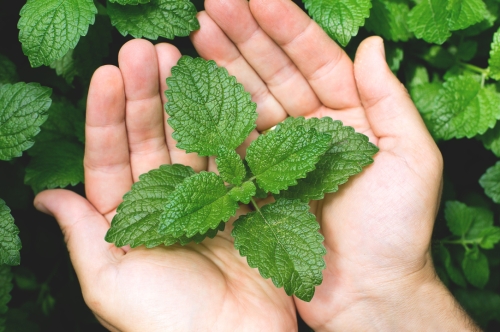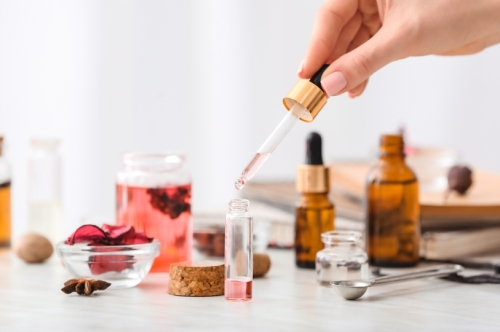Natural Flavours in Pharma Manufacturing: Making Medicines More Palatable

Introduction
Swallowing a bitter pill—literally—isn’t always easy. Whether it’s a child grimacing at a syrup or an adult struggling with a chalky tablet, taste plays a critical role in pharmaceutical compliance. That's where flavouring in pharmaceuticals becomes essential.
Natural flavours are increasingly being used in the pharma industry to mask unpleasant tastes, improve patient experience, and even enhance brand loyalty. Especially in the age of wellness and clean-label movements, pharmaceutical companies are shifting from synthetic additives to more natural and plant-based flavouring agents.
In this article, we’ll explore how natural flavours are used in pharmaceutical manufacturing, why they matter for both brands and consumers, and what trends are shaping the future of this sector.
Why Is Flavouring Important in Pharmaceuticals?
Flavouring isn’t just about making medicines taste better—it’s about increasing adherence to treatment, especially in children, elderly patients, and those with chronic conditions.
Key reasons include:
- Improved patient compliance
Better-tasting medicines mean fewer missed doses. - Enhanced product appeal
Especially in chewables, syrups, lozenges, and effervescent tablets. - Support for long-term therapies
Pleasant-tasting nutraceuticals and supplements encourage daily usage. - Psychological ease
A comforting taste can reduce anxiety associated with taking medicine.
Natural vs Artificial Flavours in Pharma
|
Aspect |
Natural Flavours |
Artificial Flavours |
|
Source |
Fruits, herbs, spices, plant extracts |
Lab-synthesised chemicals |
|
Label Preference |
Consumer-friendly, supports “clean label” trend |
Increasingly avoided in wellness-focused products |
|
Cost |
Often higher |
Generally lower |
|
Perception |
Safer, healthier |
Viewed with skepticism by health-conscious users |
With wellness taking centre stage, natural flavours such as strawberry, orange, mint, honey, and vanilla are now common in formulations ranging from syrups to effervescent tablets.
Common Natural Flavours Used in Pharmaceuticals
1. Citrus Flavours (Orange, Lemon, Lime)
Widely used in vitamin syrups, chewables, and ORS powders. Familiar and refreshing.
2. Mint & Menthol
Adds cooling effect, often used in mouthwashes, lozenges, and antacids.
3. Strawberry & Raspberry
Popular in pediatric syrups and chewables. Loved by kids.
4. Honey & Vanilla
Soothing and warm; excellent for throat syrups and herbal concoctions.
5. Herbal Extracts (Tulsi, Ginger, Licorice)
Doubles as both a functional and flavouring agent in Ayurvedic and wellness products.
Flavouring Techniques in Pharma Formulations
Pharmaceutical flavouring is not just sprinkling in a taste—it’s a complex formulation science involving:
1. Taste Masking
Using flavours and sweeteners to cover bitterness, metallic or chalky notes in APIs (Active Pharmaceutical Ingredients).
- E.g., bitterness of paracetamol masked using orange or berry flavours.
2. Encapsulation
Flavour and active ingredients are enclosed in coating materials to release the taste only at specific points (e.g., in the stomach, not the mouth).
3. pH Adjustment
Altering the acidity of the formulation can reduce bitterness and allow flavouring agents to work more effectively.
4. Sweetener Synergy
Combining natural flavours with non-sugar sweeteners (like stevia or monk fruit) to maintain taste without increasing sugar load.
Regulatory Considerations for Natural Flavours in Pharma
Pharmaceutical-grade natural flavours must adhere to strict regulatory guidelines:
- GRAS (Generally Recognized as Safe) status by FDA or equivalent bodies
- Must not interact chemically with the active ingredients
- Should be stable across shelf life and various storage conditions
- Must be listed on packaging under excipients
Brands are now opting for natural flavour suppliers who can offer full traceability, allergen-free certifications, and GMP compliance.
Trends Shaping the Future of Flavouring in Pharmaceuticals
✅ Rise of Plant-Based Medicine
With nutraceuticals and herbal medicines growing, natural flavours are essential for appeal and compliance.
✅ Custom Flavour Development
Brands are investing in tailor-made flavour profiles based on patient feedback and demographics.
✅ Pediatric-Friendly Formulations
More effort is being put into flavours that resonate with children without compromising safety.
✅ Clean Label Demand
"Free from artificial flavours and colours" is becoming a key selling point, even in the OTC segment.
Final Thoughts
Flavouring in pharmaceuticals is no longer a secondary concern—it’s a core part of product development and patient engagement.
Natural flavours strike the perfect balance between function and feel, helping to improve both taste and trust in medicines.
As consumers grow more conscious and demanding, embracing natural, pleasant-tasting formulations is not just good science—it’s good business.
FAQs
Q1: Why are natural flavours preferred in pharmaceutical products?
They are safer, cleaner, and better aligned with consumer health expectations—especially for kids and wellness-focused buyers.
Q2: Can flavours affect the efficacy of medicine?
If formulated correctly, natural flavours do not interfere with the active ingredients and are strictly regulated to ensure safety.
Q3: What is the best natural flavour for kids’ medicine?
Strawberry, orange, and vanilla are widely accepted and effective for masking bitterness.
Q4: How are natural flavours added to pharma products?
They’re added as excipients using techniques like encapsulation, emulsification, or through pH-adjusted syrups.
Q5: Are flavouring agents listed on medicine labels?
Yes. Most countries mandate transparent labelling under "excipients" or “inactive ingredients.”












